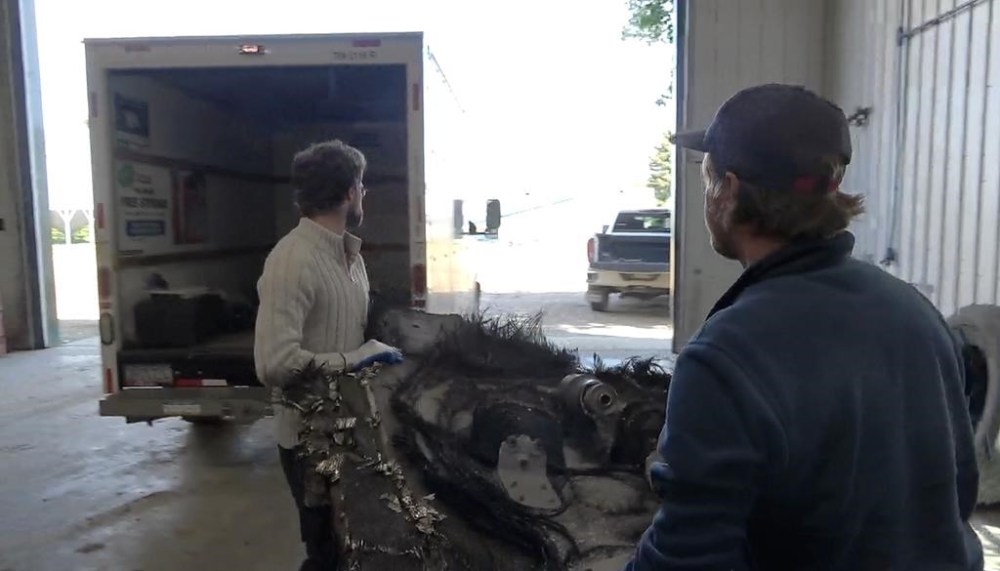SpaceX staff collect cosmic junk found on farmer’s field in Saskatchewan
Advertisement
Read this article for free:
or
Already have an account? Log in here »
We need your support!
Local journalism needs your support!
As we navigate through unprecedented times, our journalists are working harder than ever to bring you the latest local updates to keep you safe and informed.
Now, more than ever, we need your support.
Starting at $15.99 plus taxes every four weeks you can access your Brandon Sun online and full access to all content as it appears on our website.
Subscribe Nowor call circulation directly at (204) 727-0527.
Your pledge helps to ensure we provide the news that matters most to your community!
To continue reading, please subscribe:
Add Brandon Sun access to your Free Press subscription for only an additional
$1 for the first 4 weeks*
*Your next subscription payment will increase by $1.00 and you will be charged $20.00 plus GST for four weeks. After four weeks, your payment will increase to $24.00 plus GST every four weeks.
Read unlimited articles for free today:
or
Already have an account? Log in here »
Hey there, time traveller!
This article was published 11/06/2024 (494 days ago), so information in it may no longer be current.
ITUNA, Sask. – Two men with SpaceX descended on a Saskatchewan farm in a moving truck Tuesday to retrieve cosmic junk that fell earlier this year from one of its spacecrafts.
The workers, who didn’t give their names while at the farm near Ituna, lugged the large scorched pieces of carbon fibre and aluminum into the back of the U-Haul before leaving.
They declined to say why the fragments failed to burn up before slamming into the field, what spacecraft the pieces came from, where the wreckage was going and what the company plans to do with it.

They confirmed they work for SpaceX, founded by entrepreneur Elon Musk, and directed further questions to a company email. SpaceX did not immediately respond to a request for comment Tuesday.
The retrieval comes months after farmer Barry Sawchuk found the debris and said he was contacted by SpaceX for its return.
One fragment, taller than Sawchuk, weighs 44 kilograms. A second, smaller one is about 10 kilograms. Other pieces were also found on neighbouring farms.
Sawchuk said SpaceX paid him an undisclosed amount of money to get the junk back, and he plans to use those dollars to help fund a new rink in the community northeast of Regina.
He said having the men show up Tuesday felt like any other day.
“It’s no different than going to seed a crop or harvesting a good crop. It’s all just the same thing,” Sawchuk told reporters.
“I guess the one thing is it’s a little community that is on the map. Let’s hope it doesn’t happen again and somebody doesn’t get hurt.”
Sawchuk, who briefly spoke with the SpaceX staff, said they told him the company wants to figure out why the debris didn’t dissolve in the atmosphere.
“They realized there was an issue, so they’re trying to deal with it,” he said.
Samantha Lawler, an astronomy professor at the University of Regina who was at the farm to witness the retrieval, said she wanted to learn why the space junk didn’t burn up.
She said the company has thousands of Starlink satellites in orbit that are expected to re-enter Earth in batches over the next few years. There will be problems if they hit the ground, she said.
“If those re-entries make it to the ground in hundred-pound pieces of garbage, like we just saw, that (could) kill lots of people. It’s terrifying.”
Lawler added she wasn’t surprised the SpaceX workers didn’t share more details.
“SpaceX is so notorious for not responding to journalists, ever,” she said.
Lawler previously sent photos and information about Sawchuk’s debris to Jonathan McDowell, an astrophysicist at Harvard who tracks space launches.
Looking at data, McDowell determined the farmer’s find was likely linked to a SpaceX Dragon spacecraft that returned to Earth with four passengers from the International Space Station in February.
Debris has also been found in other locations in the United States and Australia.
This report by The Canadian Press was first published June 11, 2024.
